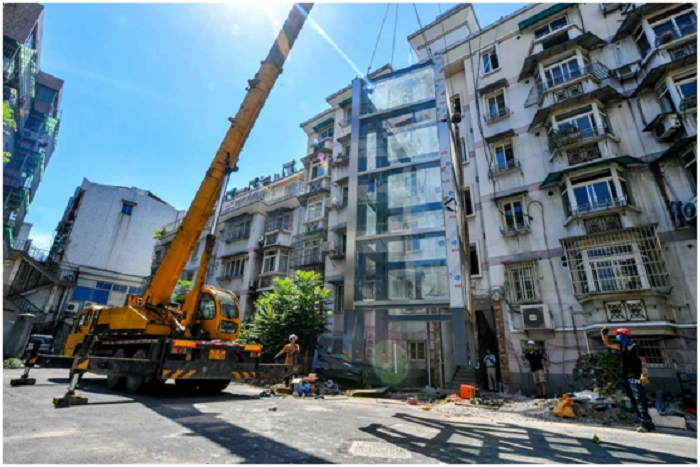



In Daxu village of Qucainka township, Qamdo, southwest China’s Tibet autonomous region, stand rows of newly built houses. That’s where villager Ashi lives.
Four years ago, Tibet autonomous region started renovating dilapidated houses for families categorized as poor and other three key groups. Ashi, who was impoverished then, was on the list and moved into a new and bright house. “It was really happy for me to move into the new house,” he said.
During the 13th Five-Year Plan period (2016-2020), China accelerated the construction of its housing supply and support system, guaranteeing the right to housing for tens of millions of the Chinese people.
Housing renovation for rundown urban areas greatly improving living conditions for residents
“When we lived in the rundown areas, the house was small and cold, and the narrow alleys outside were the only place where we could take a walk,” said Li Shuhui, who once lived in a shanty town in Beijing, adding that when it rained, the puddles in the alleys and streets could even go up to the ankles. Now, the woman has moved into a new house in a residential complex in Fengtai district, Beijing, where fitness facilities and outdoor play spaces for children are provided.
According to the 13th Five-Year Plan, 20 million houses in shanty towns shall be renovated between 2016 and 2020. The goal has been over-fulfilled as 23 million houses across the country had been upgraded during the period, offering spacious and bright houses for about 50 million people. Apart from improving the living conditions, the housing renovation for rundown urban areas also optimized urban functions and promoted social harmony and stability.
Dual approach of public rental houses and rent subsidies addressing housing problems for urban low-income families
“I used to live in a 15-square-meter room that cost me 800 yuan ($119) per month,” said Song Yongyi from Licang district, Qingdao, east China’s Shandong province, who has now moved into a two-bedroom apartment with cheaper rents.
In Licang district, 8,421 households have been offered public rental houses in the recent five years. Some of them were offered rental houses, and the rest received rent subsidies.
As of the end of 2019, a total of 38 million Chinese residents had moved into public rental houses, and nearly 22 million received rent subsidies. It has obviously improved the housing conditions for low- and medium-income families, and alleviated the housing problems of the newly employed and migrant workers in urban areas.
Renovation of rural dilapidated houses and old urban residential areas offering safe and livable houses for the people
Shen Ming from Baiyun neighborhood, Haishu district of Ningbo, east China’s Zhejiang province, told the People’s Daily that an elevator has been installed for his apartment building. “I live on the fifth floor, and now it’s much more convenient for my 80-year-old mother to go outside,” he said.
From guaranteeing basic living conditions to offering safe and livable houses, the renovation of existing houses is meeting the increasing demand of the people for housing improvement. As of the end of last year, 62 million rural households in China had moved into new houses from dilapidated ones, and 7 million houses in urban areas are expected to be renovated this year. Over 100 million urban residents will be benefited by future renovation programs.
Applying multiple approaches such as renting, sales, renovation and subsidizing, China is making stronger its housing guarantee. The housing supply and support system of the country, together with its housing market system, will jointly help meet the housing needs of all of its people.


The Executive and members of the.


The Acting Director, FCT Directorate of.


President Bola Ahmed Tinubu has been.



Barely a month after resignation of.


An Abuja based Legal Practitioner, Osuagwu.



Convener of Equitable Remedy, Mrs. Magaret.


Contractors handling the contract for city.


Nigerian government may have concluded plans.


The Diplomatic Correspondents Association of Nigeria.


A rights group, “Follow Me Talk.
Leave a Comment